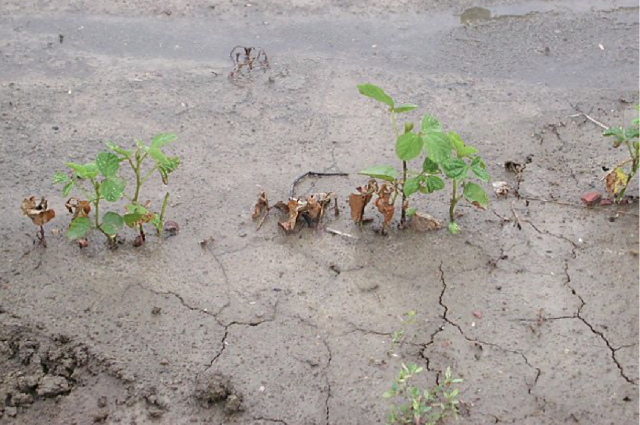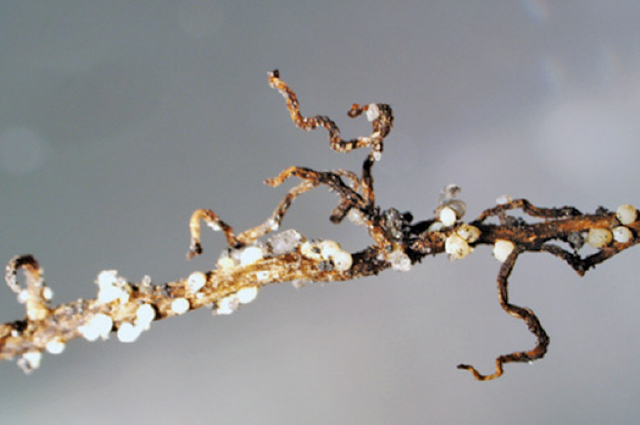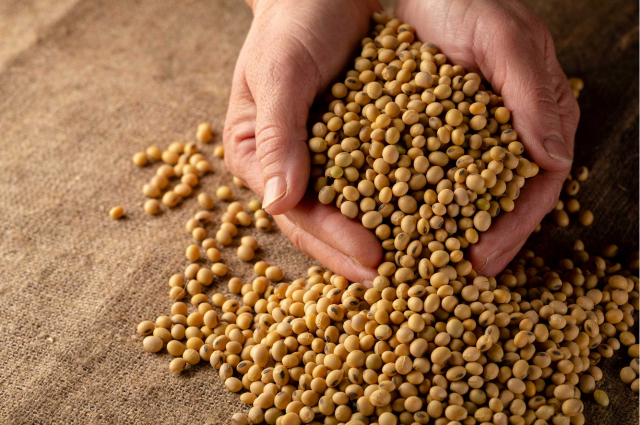Pythium and Rhizoctonia in Soybean Seedlings
With soybean planting completed in some regions, seedlings are emerging in early planted soybean fields. Starting now and continuing for the next two weeks, producers should scout for soybean seedling diseases.
Soybean producers may think scouting for seedling diseases is no longer needed due to increased seed treatments. Actually, that is not the case. Different fields have different seedling diseases and no seed treatment is effective to all diseases. Scouting will help determine the necessity of seed treatment for a particular field and the efficacy of seed treatment used.
Damping off by Pythium and Phytophthora.
For seedlings infected by fungal pathogens, damping-off can occur either before or after soybean emergence. When the seed fails to emerge because of fungal attack, seed rot or pre- emergence damping-off can occur. Pythium and Phytophthora are two fungi causing pre-emergence damping-off. When the fungi attack the seed before germination, seed rot occurs. Seed that is dead before germination will be soft and rotted with soil adhering to it. If infection occurs after germination, seed may fail to emerge and dead plants will have rotted cotyledons, which are seen more often in hard surface fields.
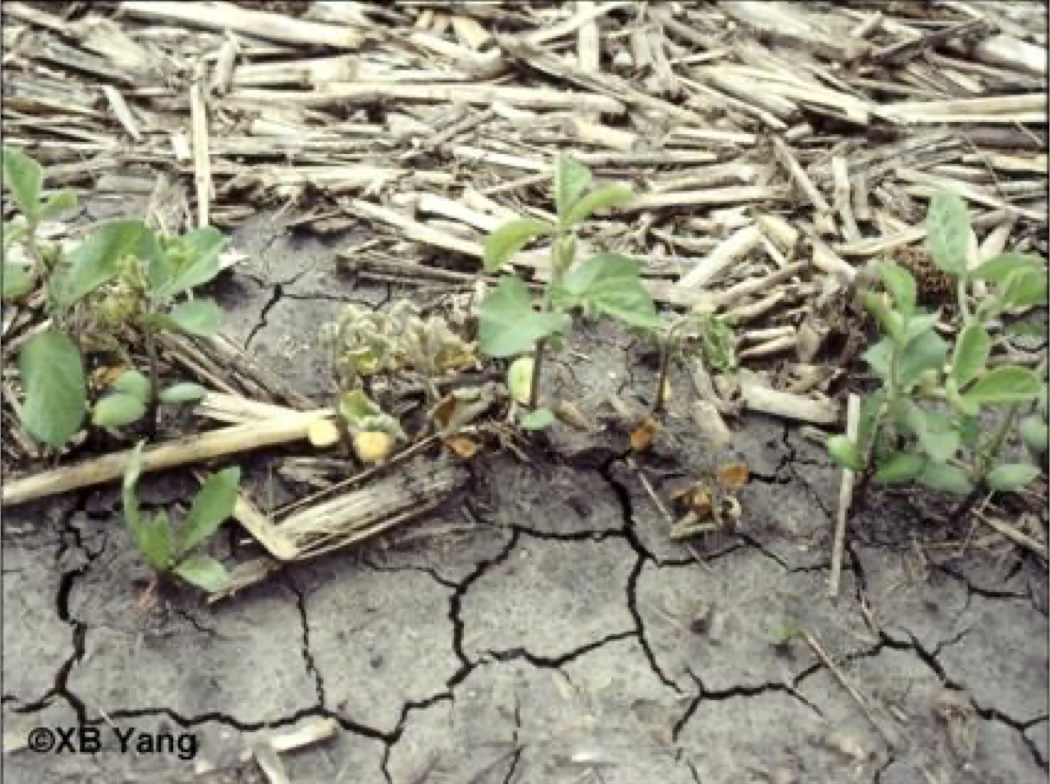
Pre-emergence damping-off
Seedling blight occurs after seedlings emerge. Seedling blight by Pythium is very similar to that by Phytophthora in terms of symptoms. One normally cannot separate the two without further laboratory tests. When seedling blight occurs, dead seedlings are visible on the ground. Infected plants dead before true leaf stage will have a rotted appearance. If leaves are present, infected seedling leaves will have a gray-green color before turning brown. A few days later, the plants die and have a rotted appearance. Diseased plants are easily pulled from the soil because of rotted roots. Seedling blight by Phytophthora can be differentiated from Pythium after V2 growth stage or later. Plants infected by Phytophthora have a brown discoloration extending from root up the stem. The two fungi attack soybeans in different temperature regimes. Soybeans planted in cold, wet soil are most likely to be attacked by Pythium. If disease occurs in warm conditions (around 80F), it is more likely caused by Phytophthora.
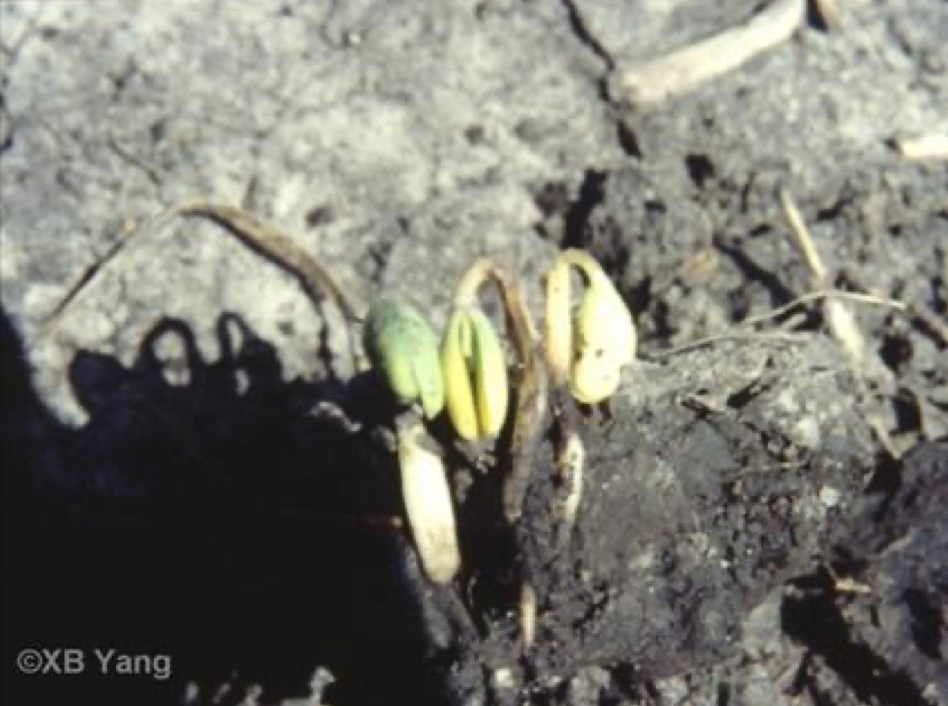
Seedling blight by Rhizoctonia also can cause seedling diseases.
Seedling disease by Rhizoctonia is different from those caused by Pythium and Phytophthora. Unlike Pythium and Phytophthora damping-off, stem discoloration by Rhizoctonia is usually limited to the cortical layer of the main root and hypocotyl. Infected stems remain firm and dry. Typical symptoms are localized brown to reddish brown lesions on the hypocotyl and lower stem that do not extend above the soil line. The reddish brown color is a key symptom in diagnosing the disease.

Seedling blight by Rhizoctonia normally appears as the weather becomes warm (80F) and it is more often seen in late planted soybean fields.
Cool early May temperatures have contributed to good stands in emerged soybean fields and no replanting has been reported, although seedling blight has been observed.
If stand reduction happens in a soybean field that needs replanting, producers should determine if a fungal disease is involved – before replanting. A fungicide seed treatment may be needed for damping-off caused by fungal pathogens. Identification of seedling disease is essential in fixing the problems as different fungicides are effective in controlling different seedling diseases.
The information is also useful for premium seed treatment of next year’s soybean.
Source: XB Yang, Iowa State University Department of Plant Pathology
Fungicide, Insecticide, Inoculant & Growth Promoter
Dyna-Gro’s Dyna-ShieldTM Platinum is everything you need in a single seed treatment. Dyna- ShieldTM Platinum features fungicides/insecticides that are selected to blend to regional pathogen and insect pressures. Our fungicides and insecticides are engineered to exact specifications, defending your crops against the dangerous plant threats of today so you can profit from the high-volume yields of tomorrow.
Protect your crops against damaging pathogens including:
- Pythium
- Rhizoctonia
- Phytophthora
- Fusarium
- Sclerotinia
- Phomopsis
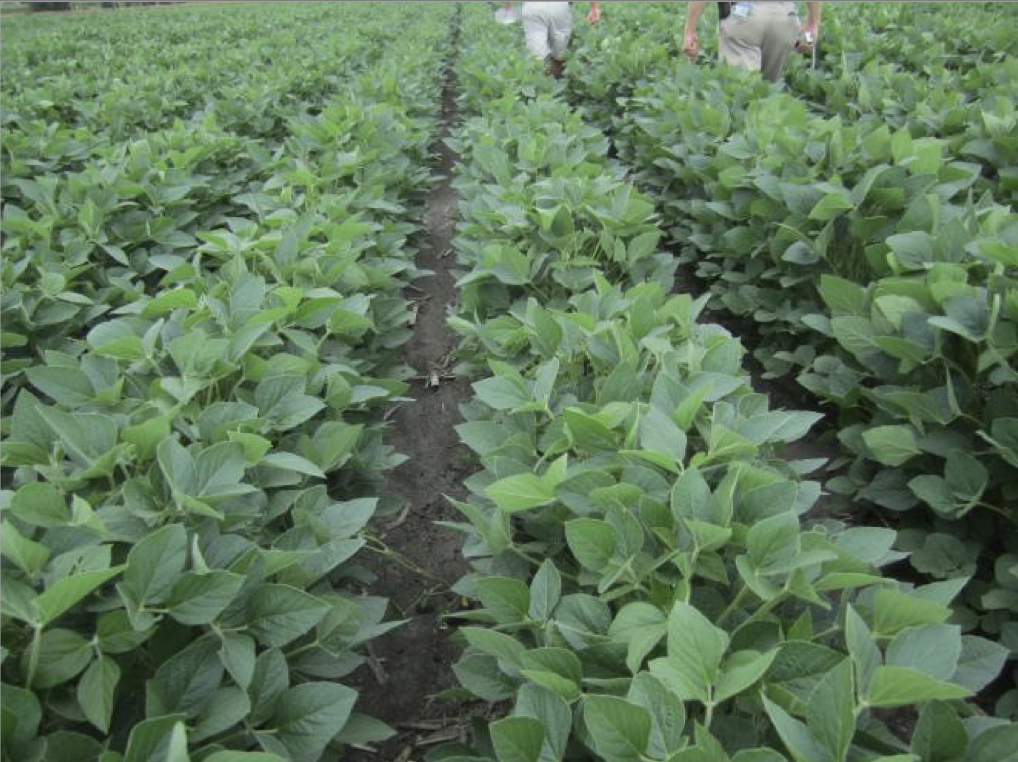
Maximize your next yield with Dyna-Gro Seed.
Dyna-gro seed treatments are specifically targeted to meet the unique demands of specific growing regions and planting conditions.
We determine the ideal solution for each of our clients’ fields and can help develop a full-scale, customized crop protection program.
©Copyright 2015. This information may have been accumulated from publicly available sources outside of Dyna-Gro Seed, or its affiliates. Individual results may vary, and performance may vary from location to location and from year to year. This result may not be an indicator of results you may obtain as local growing, soil and weather conditions may vary. Dyna-Gro® is a registered trademark of Loveland Products, Inc. Featured logos are service/trademarks of their respective owners.

